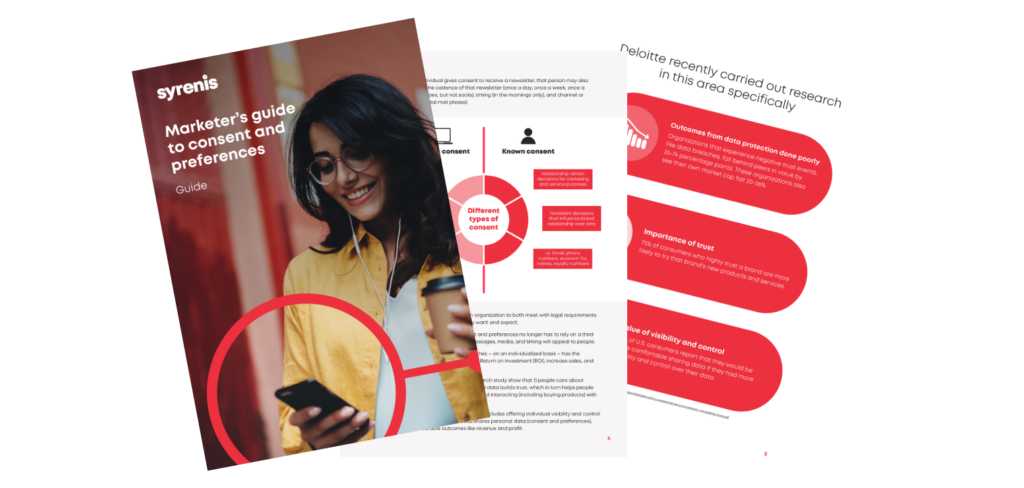At the heart of every effective digital strategy today lies a non-negotiable priority: privacy. Once considered a bottom-of-the-pile concern, privacy has surged to the forefront of marketing conversations; driven by high-profile data breaches, increasing regulatory scrutiny, and a growing wave of consumer scepticism.
As global privacy laws continue to evolve, and as users demand more control over their personal data, marketers are being called to rethink not just how they collect data, but how they build trust. The digital landscape is shifting fast, and those who fail to adapt risk falling behind.
So, how do you turn privacy challenges into marketing opportunities, with consumer trust at the forefront?
The shift towards a privacy-first internet: What this means for your digital strategy
Artificial Intelligence, particularly agentic AI and large language models, has taken center stage, offering unprecedented opportunities for innovation and efficiency. But as these tools become more deeply embedded in business operations, they also raise complex privacy concerns, especially when consumer data is involved.
From search queries to shopping carts, consumer data powers nearly every digital interaction, and people are becoming increasingly aware of just how much of their information is being collected. And with that awareness comes growing concern.
Privacy has evolved from a “nice-to-have” to an expectation, not just from regulators, but from consumers themselves. This shift is putting pressure on businesses to adapt, and for marketers in particular, the stakes are high.
When personalization depends on data, compliance can no longer be an afterthought, it must form a central part of any digital strategy. And with the introduction of features such as Safari’s Intelligent Tracking Prevention, traditional tracking methods are becoming less reliable. In turn, consent-driven, first-party data strategies become not just preferable, but essential.
The third-party cookie debate
With the ongoing uncertainty surrounding third-party cookies, marketers have been compelled to rethink and evolve their digital strategies. Traditionally, third-party cookies played a crucial role in tracking user behavior, evaluating campaign effectiveness, and delivering personalized advertisements.
The ever-debated decision to eliminate third-party cookies comes as a result of increased privacy concerns. And Although Google has recently signalled a continued support for third-party cookies, the broader landscape remains unpredictable.
As a result, marketers must adopt a flexible and forward-thinking approach to stay competitive and resilient in a rapidly changing digital environment.
The problem: Fragmented tools and friction-filled experiences
Marketers have a duty to adhere to global privacy legislation, including laws dotted throughout the US, as well as the EU’s renowned GDPR, or else they risk severe ramifications for non-compliant practices. Marketing to individuals without their explicit consent, for example, is one sure-fire way of losing consumer trust and damaging brand reputation.
With consumers expecting personalized, seamless experiences, marketers are under pressure to deliver data-driven insights that resonate. Yet, striking the right balance between personalization and privacy remains a persistent challenge. However, the current privacy tech landscape often works against them.
Many organizations rely on fragmented tools, manual workflows, and rigid systems that lack the agility marketers need to innovate. This disjointed setup creates unwanted friction across departments, hindering efficiency and creating less-than-ideal user experiences. Legal teams focus on compliance; IT teams prioritize security and infrastructure; whilst marketers aim to drive engagement and growth. Aligning on these goals becomes a constant struggle when systems don’t communicate, consent data is scattered, and updates require manual intervention.
From a marketing perspective, this can lead to delays in campaign launches, uncertainty around audience targeting, and the risk of non-compliance. Without a unified, flexible privacy program in place, marketing teams are left navigating a maze of approvals and limitations, which ultimately damage consumer engagement and stifle innovation.
The solution: A unified privacy solution using Consent and Preference Management
To solve this issue, marketing teams should consider implementing a Consent and Preference Management (CPM) solution. These platforms are designed to centralize consumer consent and preferences in one place, helping bridge the gap between siloed systems and fragmented tech stacks. This enables marketers to deliver campaigns that are both compliant with privacy regulations and powered by user preference data, helping craft more personalized messaging and experiences.
Beyond personalization: The benefits for marketers
For marketers, the benefits of implementing a CPM extend far beyond dynamic variables and website pop-ups. Having a scalable consent solution in place allows marketers to do far more with the data they collect, including:
- Optimized campaign delivery: Granularity in choice allows you to utilize consumer preferences to drive personalized campaigns that engage and convert.
- Unify consumer data into a singular source of truth: Consolidate consumer consent data across your entire MarTech stack, from your CRM to your marketing automation tools.
- Enhance UX and eliminate friction: Harness advanced functionality, such as Cassie’s Cross-Domain Consent, to maintain consumer consent across domains to avoid friction and reduce consent fatigue.
- Put consumers in control: Autonomy is the key to nurturing consumer trust. Allowing customers to take control of their data goes a long way to nurturing trust and increasing brand reputation.
- Utilize first-party data: Amidst uncertainty surrounding third-party cookies, marketers should consider a first-party data strategy. Having a CPM in place allows you to compliantly collect first-party data while maintaining privacy.
The next strategic advantage for your digital strategy
Having a CPM in place allows marketers to ethically personalize their campaigns by leveraging data that consumers have willingly shared, creating the conditions for optimized communications and enhanced campaign delivery.
Today, a Consent and Preference Management (CPM) system should be recognized as a core component of any modern marketing tech stack. And as privacy expectations continue to evolve, those who prioritize ethical data practices will be best positioned stay ahead of the curve.


